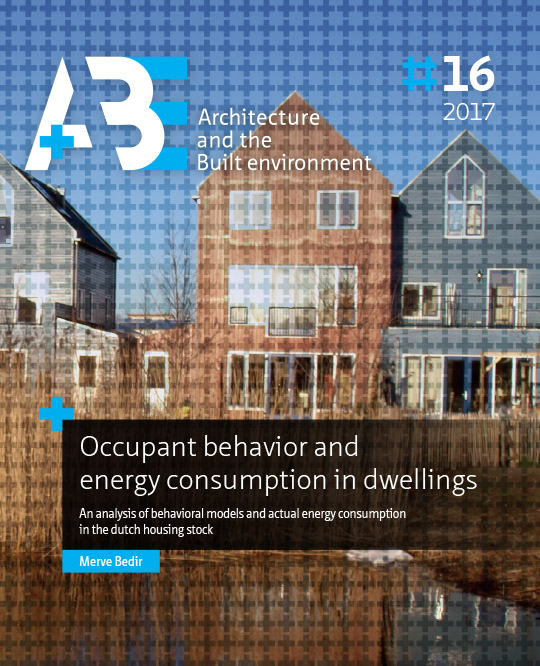Introduction
DOI:
https://doi.org/10.7480/abe.2017.16.3597Abstract
There is an increasing need for ensuring high energy savings throughout the building lifecycle, from the early design phases until post occupancy. Utility (services) and firmness (robustness) are principles of good design since Vitruvius, but sustainability was added as a new principle after 1980s, for a distinct understanding, evaluation and action development on energy consumption and environmental impact of buildings. Today, we are able to measure the consumption levels and environmental impact of our buildings, manage their indoor comfort, and combine this further with our personal desires.
Sustainability means decreasing waste and pollution, the demand for physical resources (energy, material…) and the impact on climate change, while maintaining the indoor comfort and health conditions in a building. Design decisions for sustainability include that of land use, microclimate management, form, spatial organization, building envelope, and managing water, waste, and energy systems. The essence of sustainability lies in designing all these factors with a holistic approach, while making sure that the building is usable for the occupant. Energy efficient housing requires less energy and uses renewable energy resources in the most efficient way for the energy needed during occupancy. Kim and Rigdon (1998) define the three basic principles of sustainable design as efficient use of resources (reduce, reuse, recycle); assessment of resource consumption during construction and use; and human centered design (the interaction between the human being and the environment). This research addresses the latter, the human aspect.
The buildings’ energy consumption estimated by simulation software can be validated in total, only during occupancy, when the design is tested on actual use. For residential buildings, we know that sometimes the actual energy use levels are different than the expected/calculated (Lutzenheiser, 1992; Jeeninga et al., 2001; Guerra Santin, 2010; Majcen, 2013). A couple of reasons to this can be calculation drawbacks, incorrect construction applications and unexpected occupant behavior. Therefore, better understanding of the relationship between occupant behavior and energy consumption can enable more efficient design and operation of (residential) buildings, which are more suitable to the occupants’ use considering thermal, acoustical, visual, environmental comfort, health and safety.
Policy on energy efficiency in buildings focuses mostly on building characteristics and mechanical systems like heating and ventilation. Although there is strong evidence for the influence of occupant behavior on energy consumption, the effort made to gain more insight to this relationship stayed behind for a long time. This study addresses the influence of occupant behavior on energy consumption for heating and electricity use for appliances and lighting, in residential buildings.
This research is conducted as a joint effort at Delft University of Technology, Faculty of Architecture, between the chair of Design Informatics; research program Computation and Performance, and the chair of Housing Quality and Process Innovation (HQPI). Chair Design Informatics, research program Computation and Performance aims to improve the performance of buildings by using computational methods for model generation and analysis, decision-making and design communication, in an interdisciplinary context. This research could contribute to the further development of computational model(s) and tools in support of user’s decision-making processes. Furthermore, one of the research goals of chair HQIP is to understand the influence of occupant behavior to energy consumption in dwellings. The PhD research of Guerra Santin (2010) and Majcen (2016) of the chair HQIP specifically focus on occupant behavior and energy consumption. This research is built partially on the same datasets as Guerra Santin (‘OTB dataset’ and ‘WoON survey’), with different research questions. Findings of Guerra Santin and Majcen’s research are referred to, in the relevant sections of this thesis. Most of the research conducted under the title of this PhD was published between 2009 and 2013.

